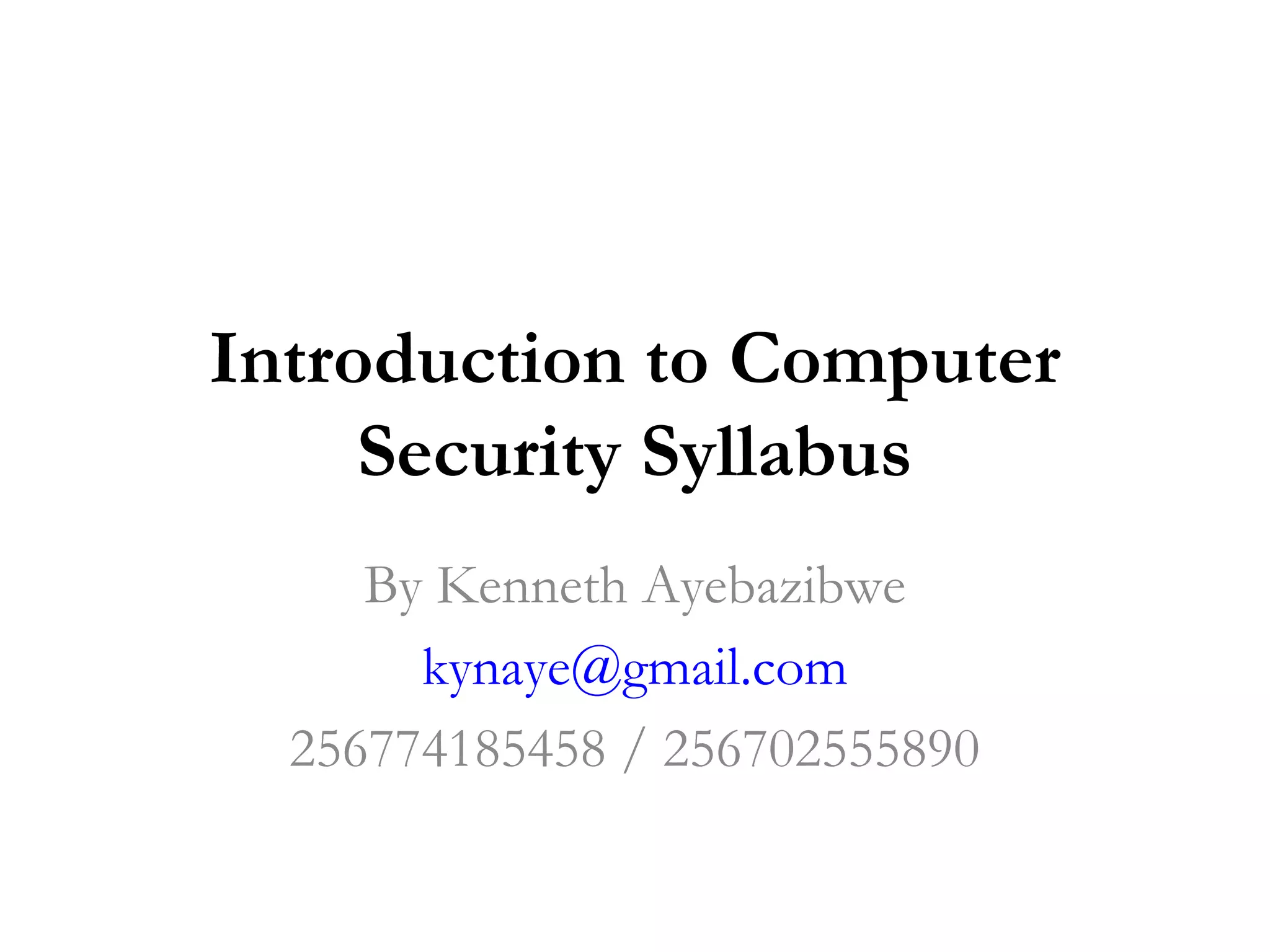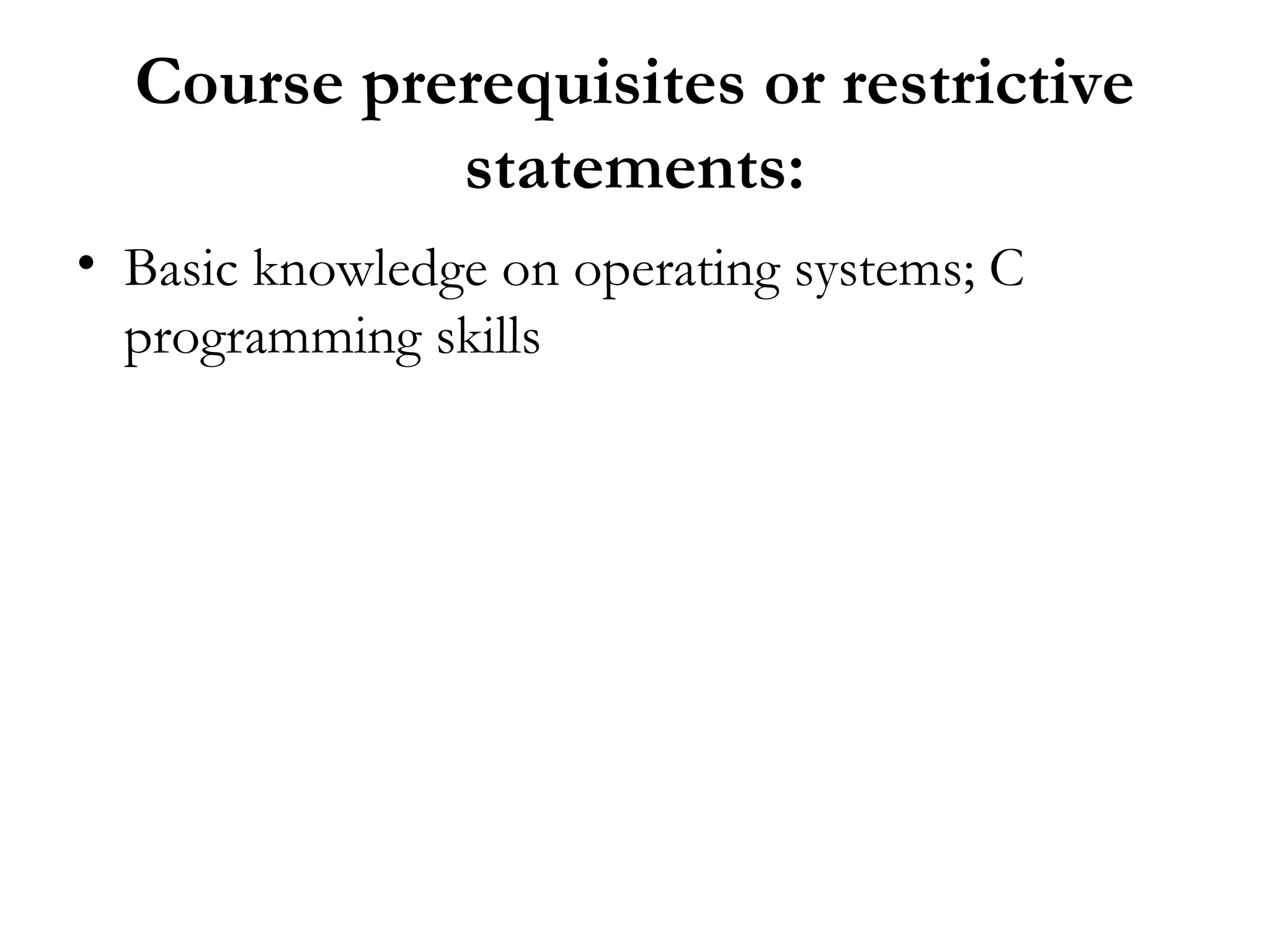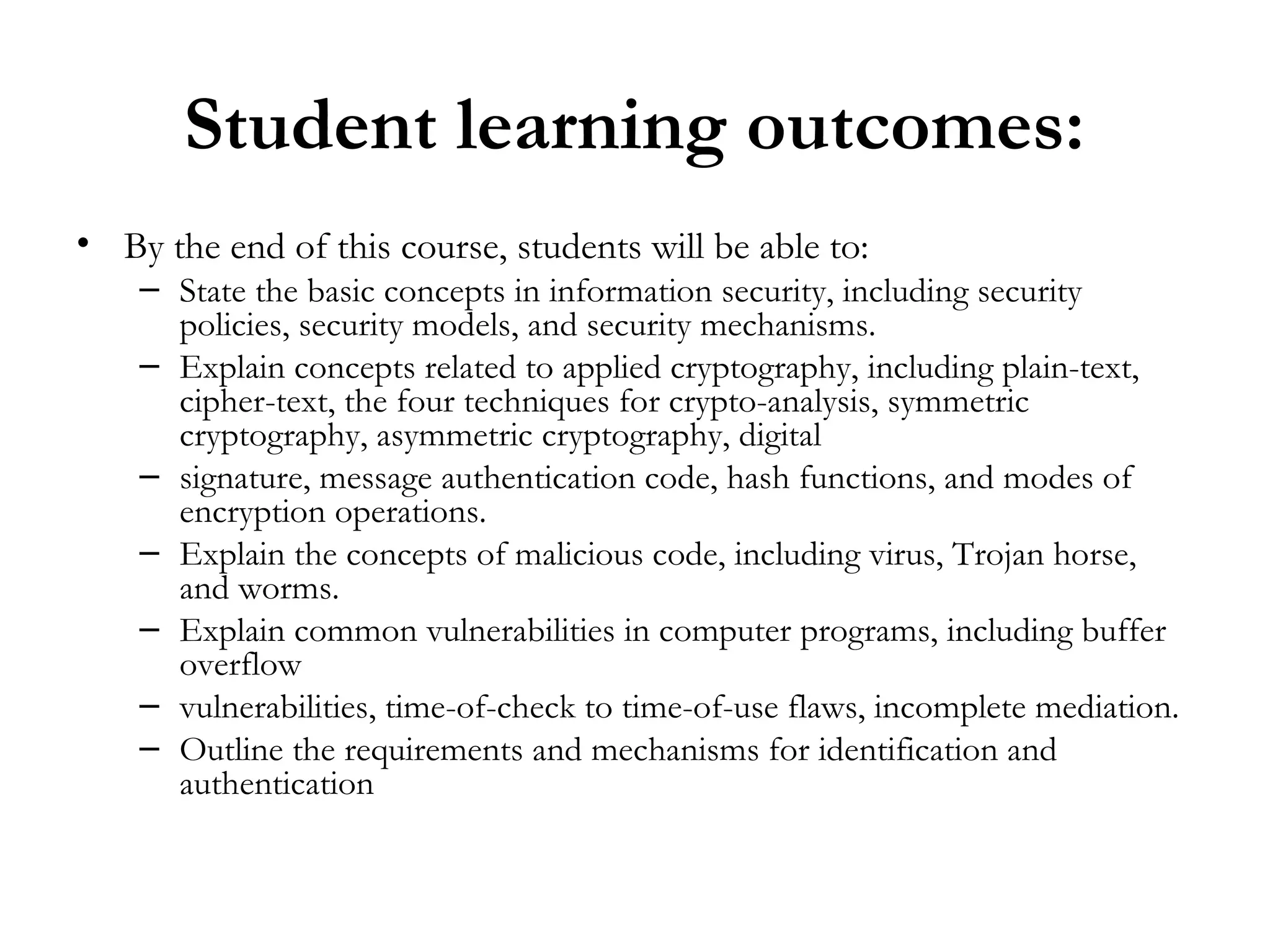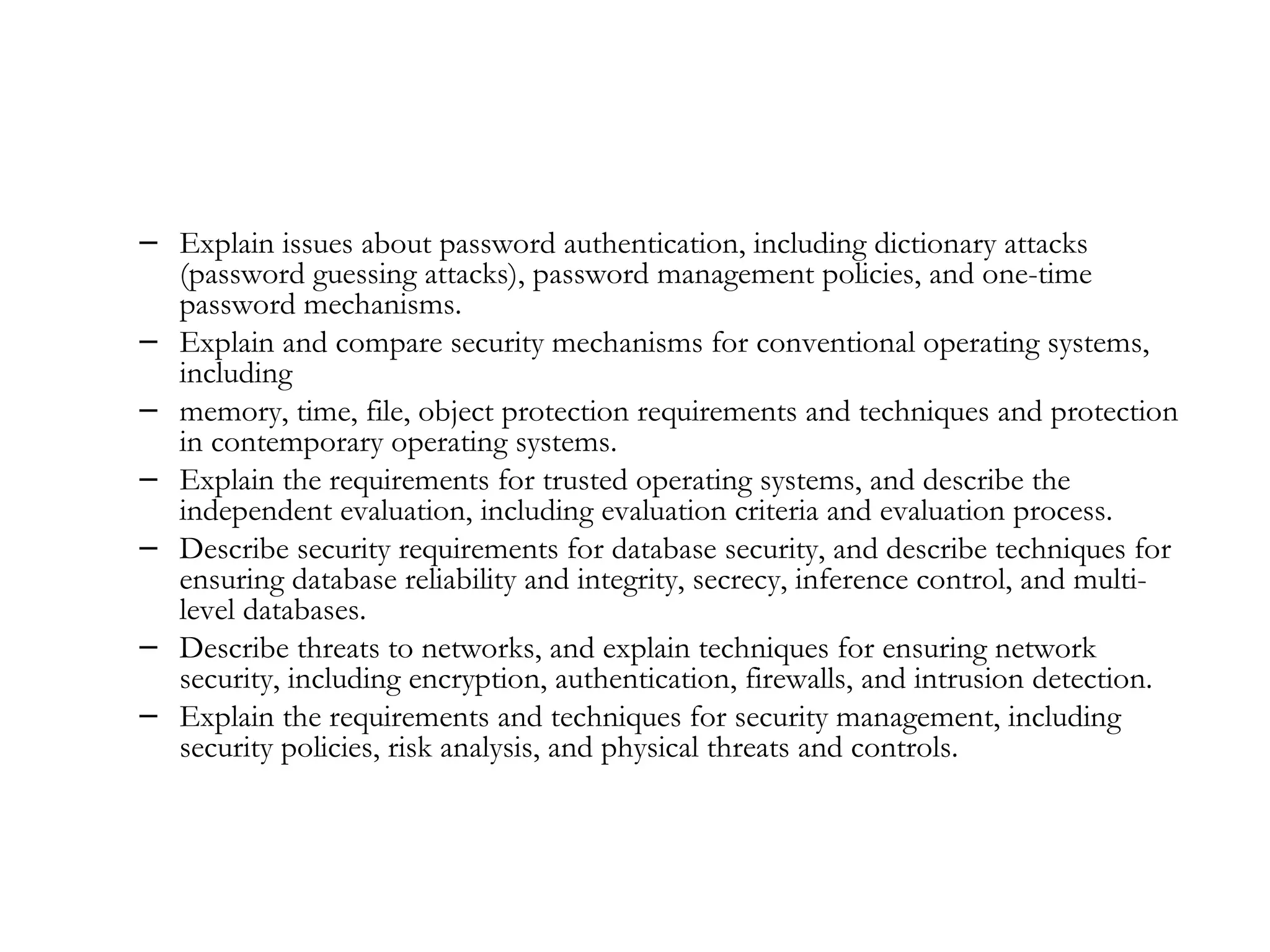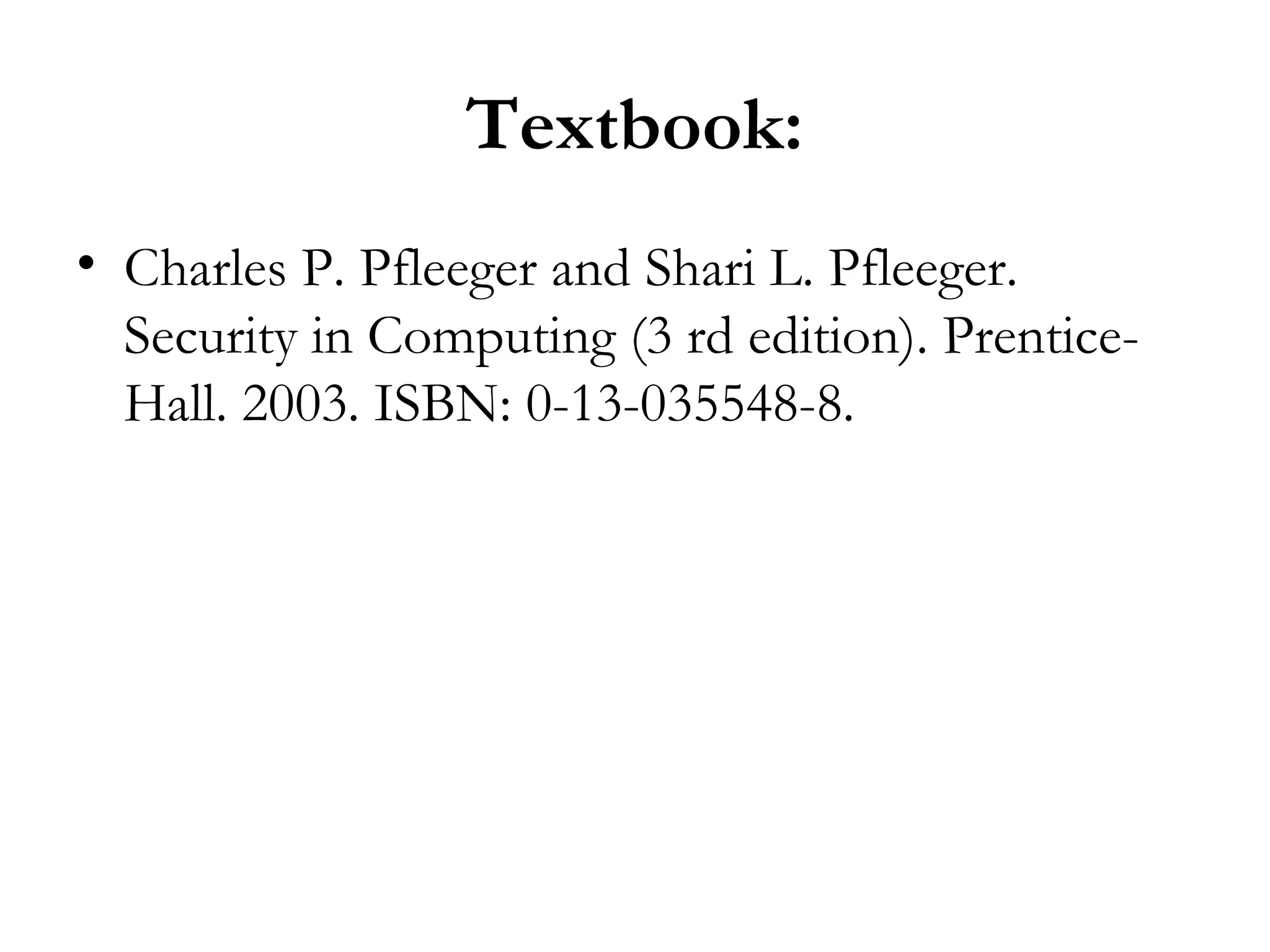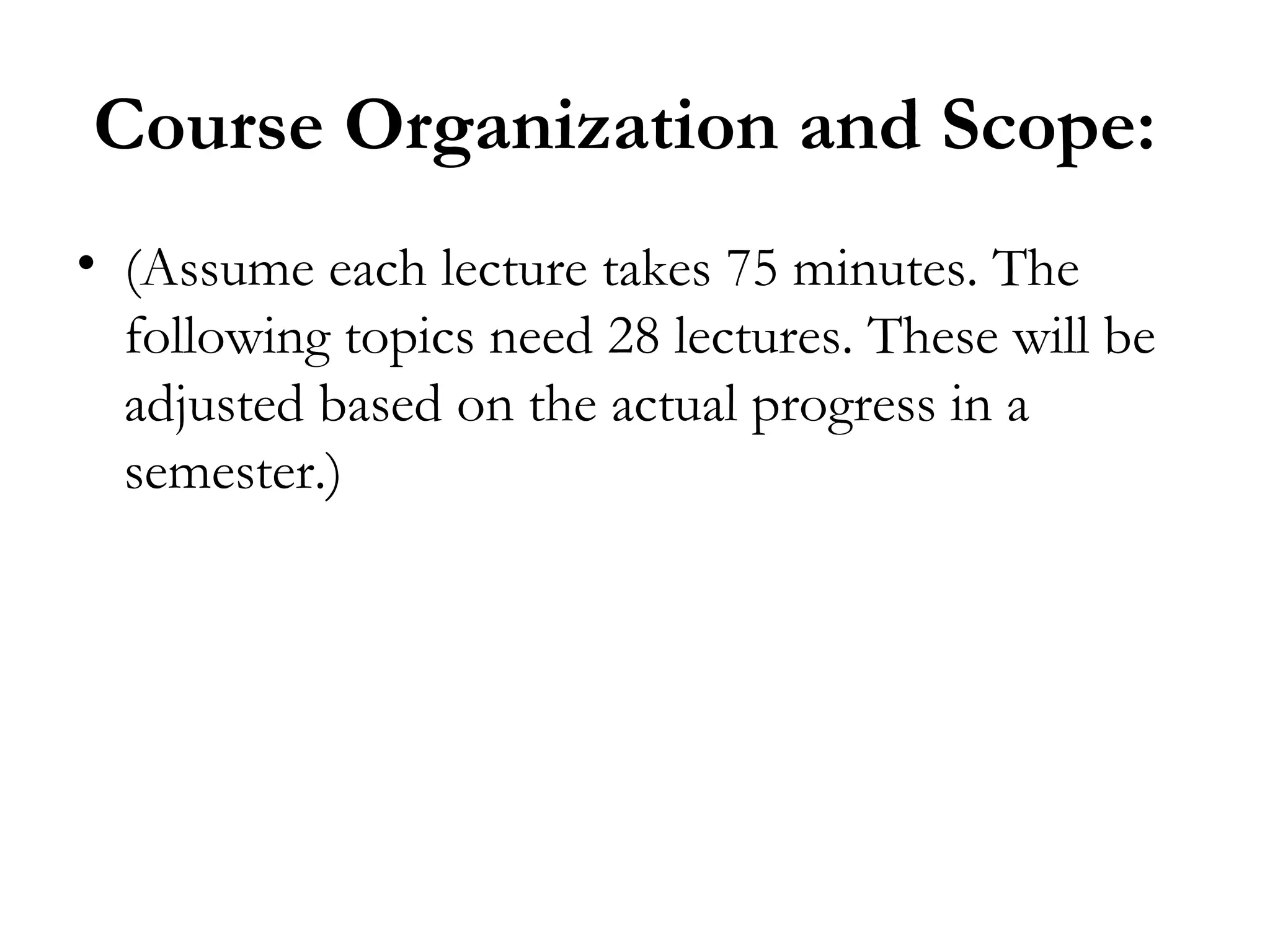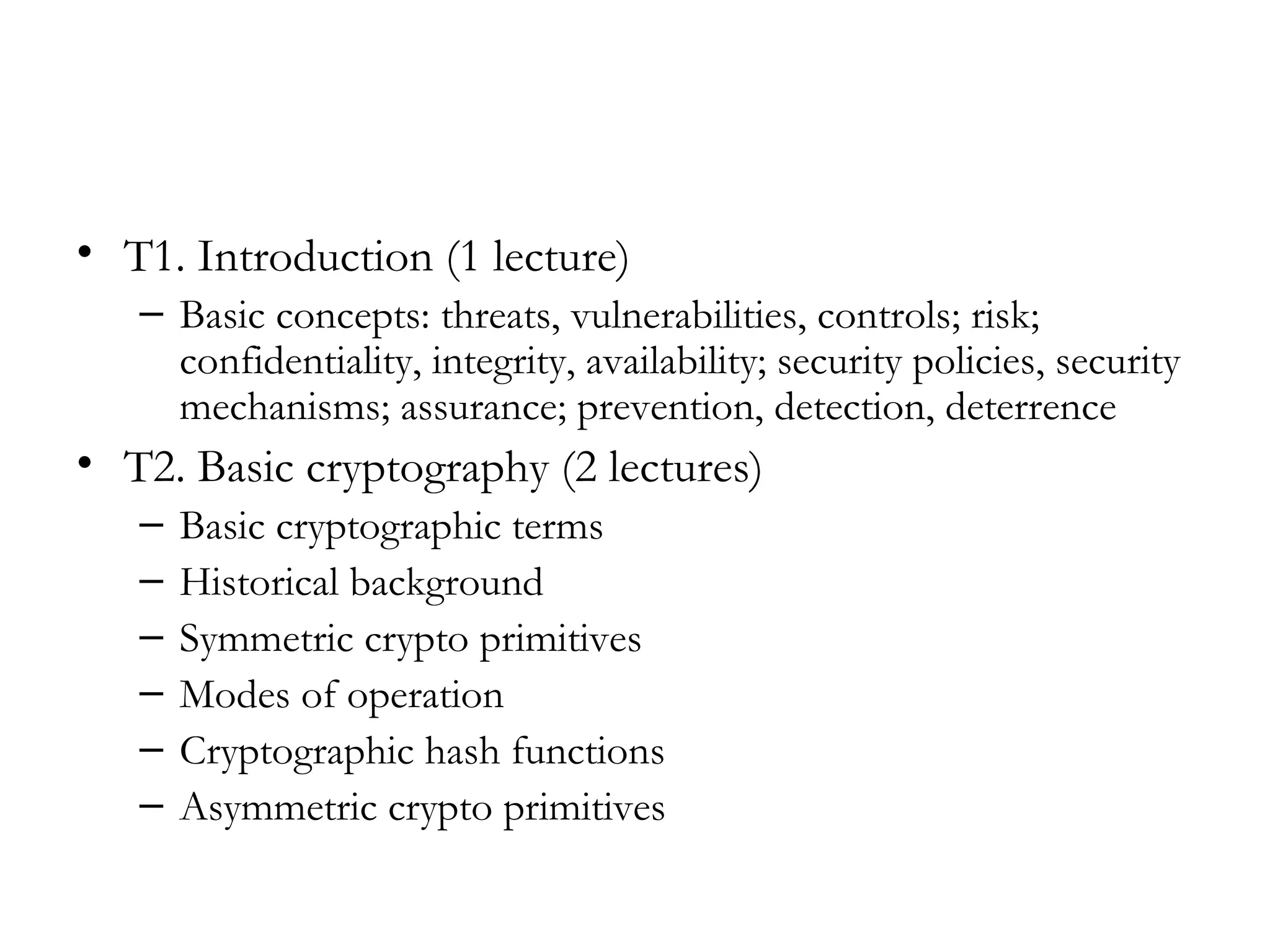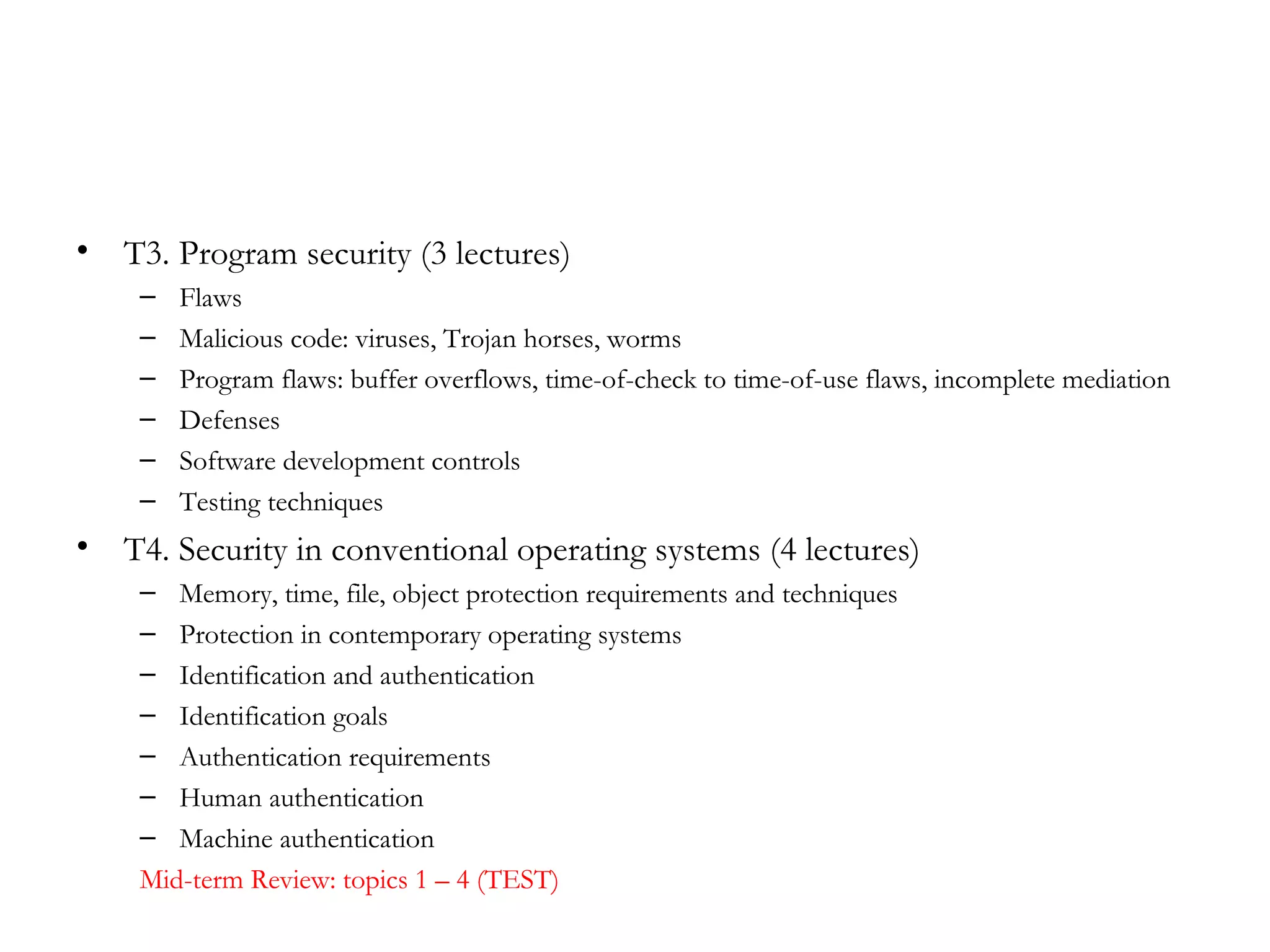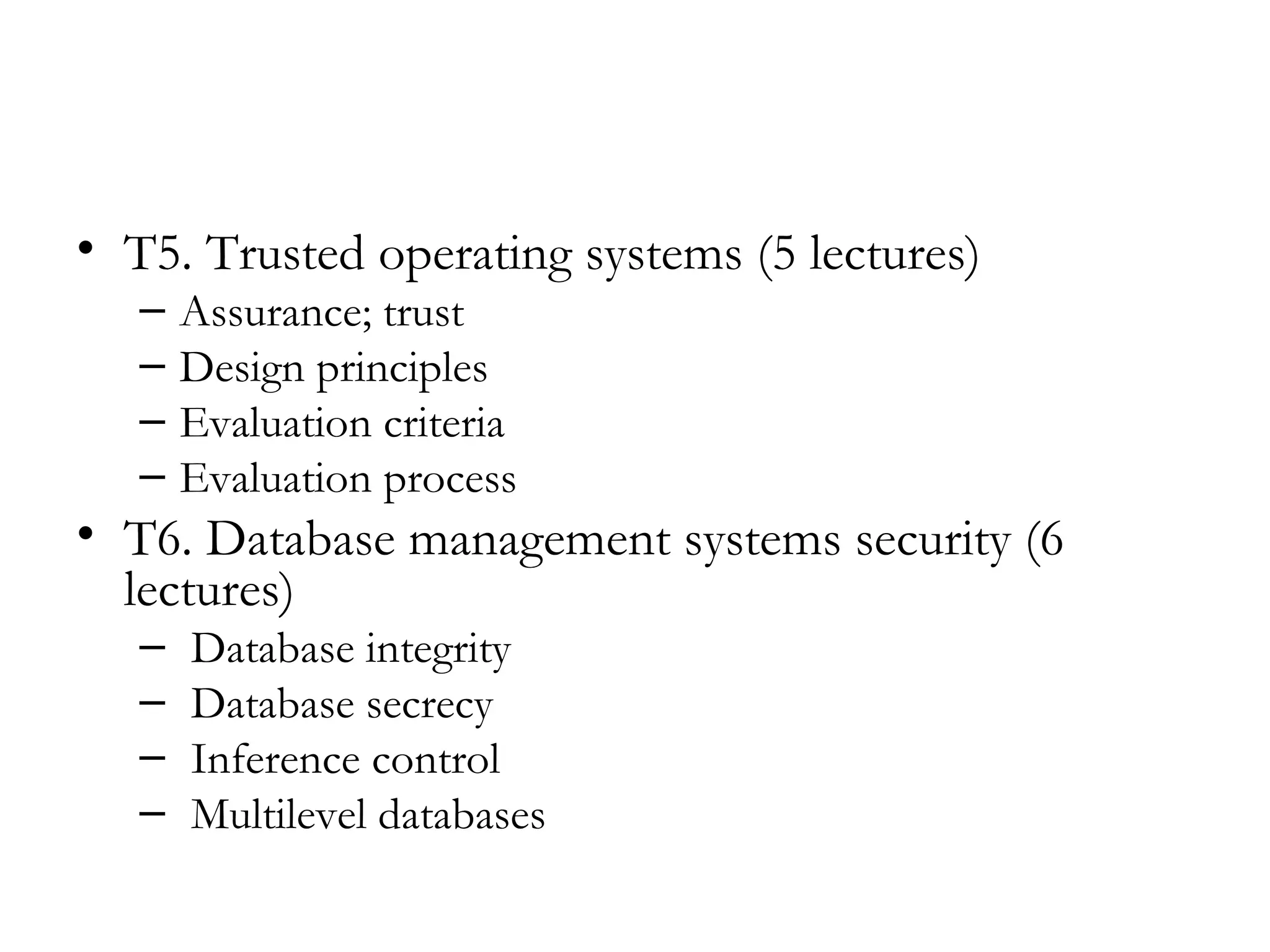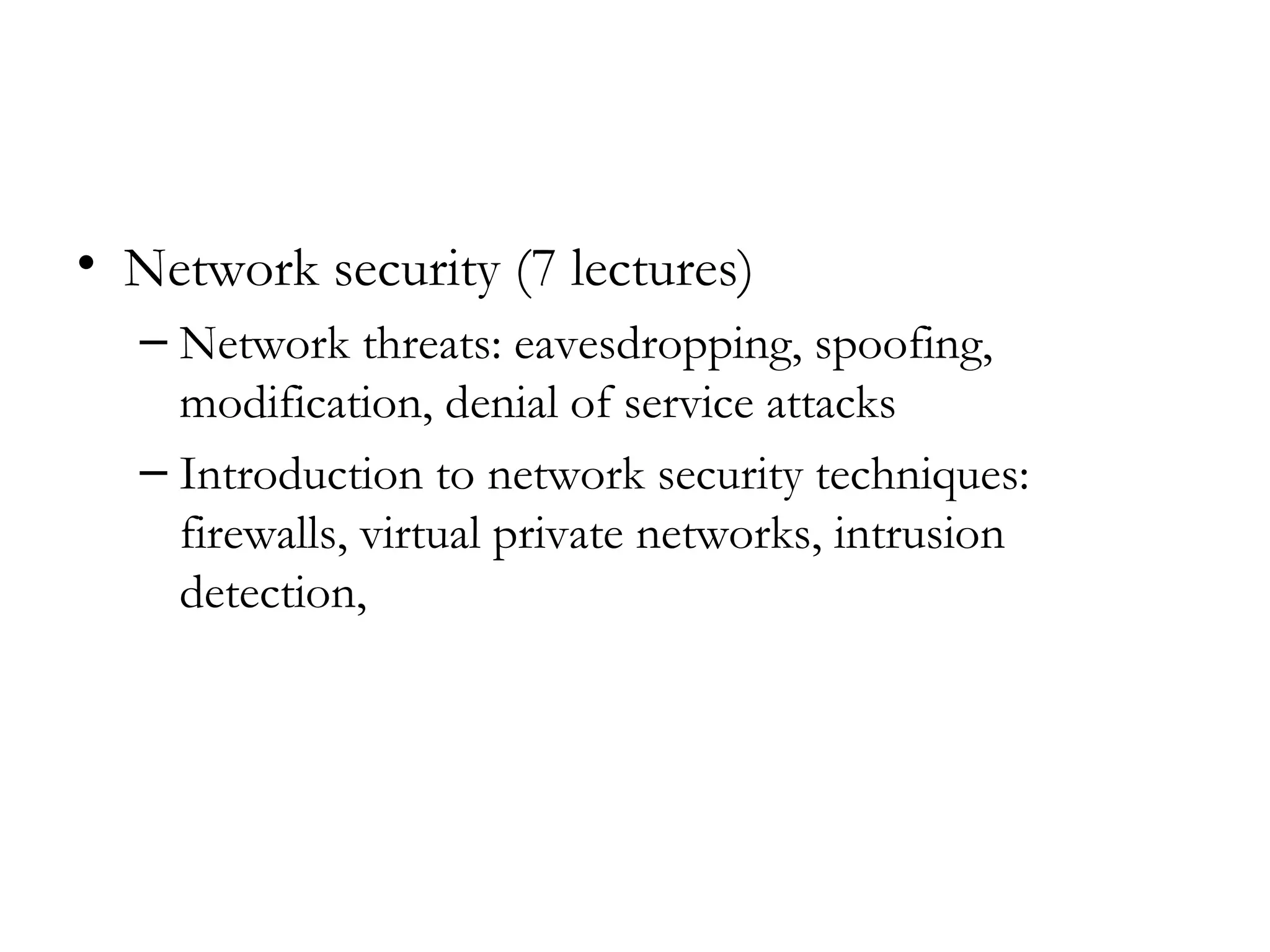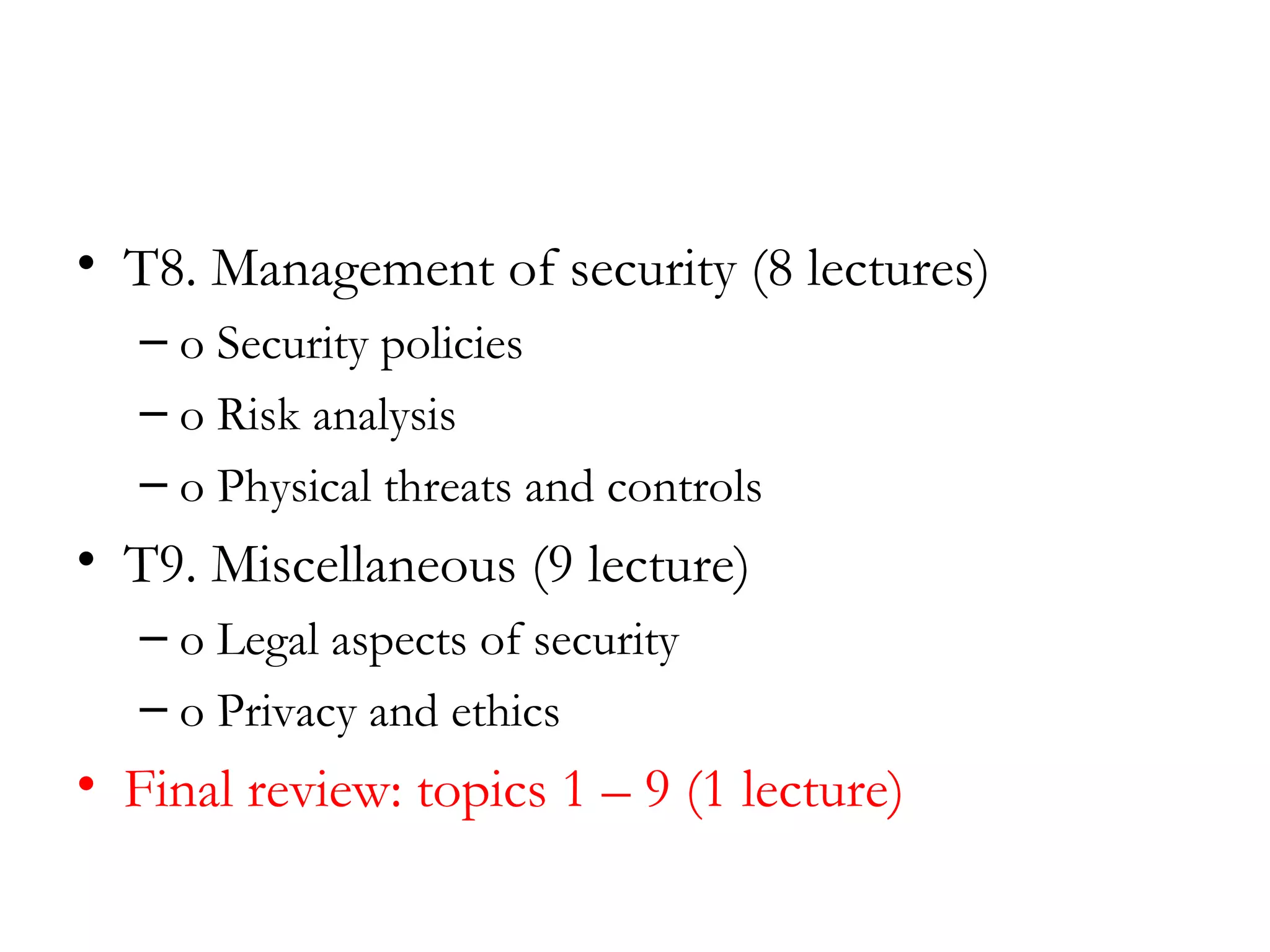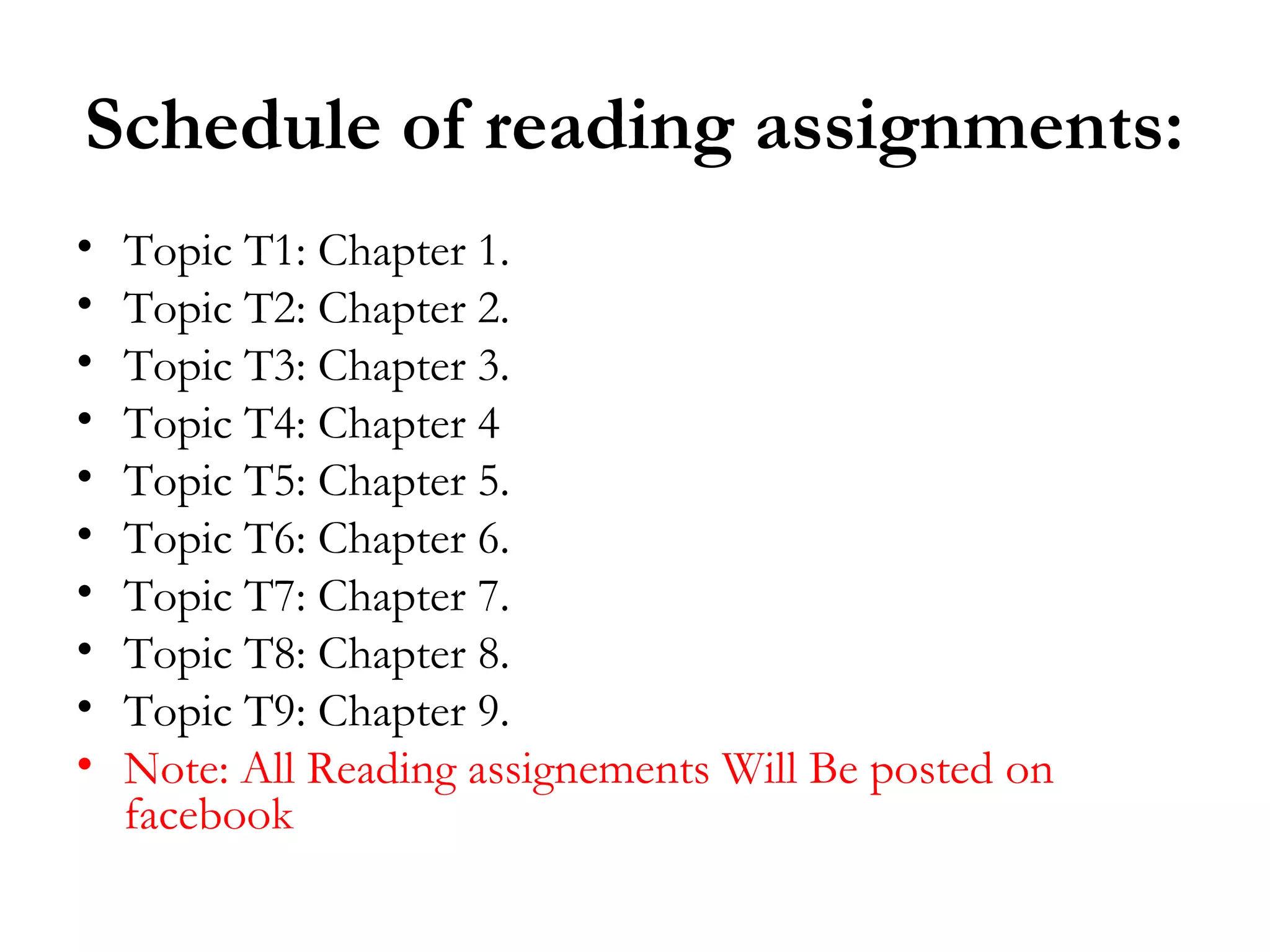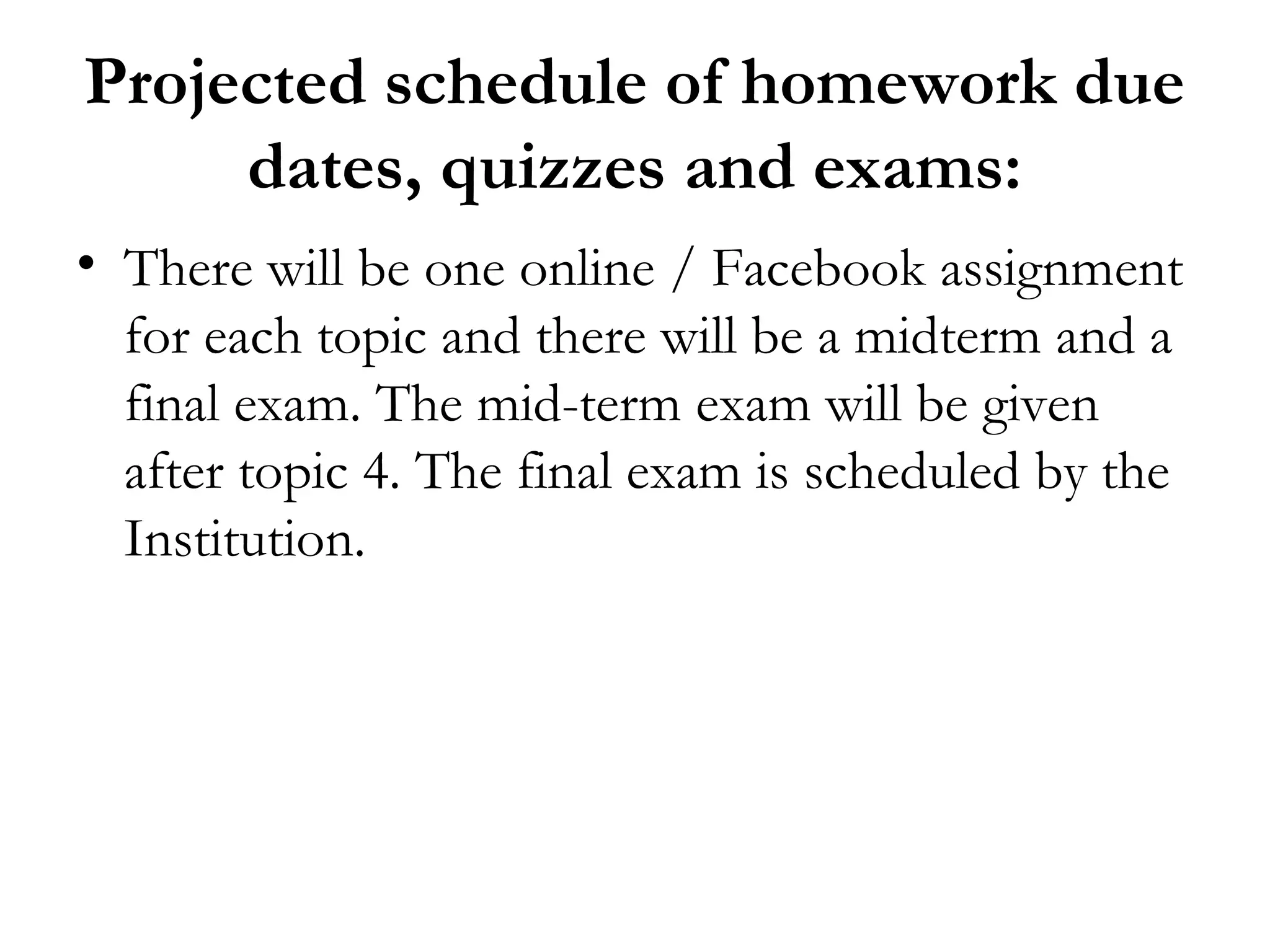This document outlines the syllabus for an Introduction to Computer Security course. The course will cover 9 topics over 28 lectures, including basic cryptography, program security, operating system security, trusted operating systems, database security, network security, and security management. By the end of the course, students will understand key computer security concepts and threats. Assignments, a midterm, and final exam will assess student learning. Required textbooks and the schedule of reading assignments are also provided.
